| Long: the bill is much longer than the head, as in a Sword-billed Hummingbird (Ensifera ensifera). |
 |
| Short: the bill is much shorter than the head, as in a redpoll. |
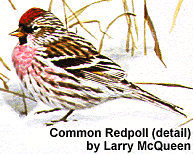 |
| Hooked: the upper mandible is longer than the lower, and its tip is bent over the tip of the lower, as in a hawk. |
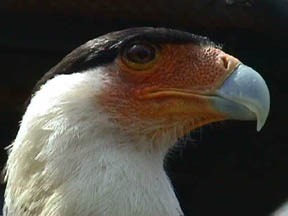 |
| Crossed: the tips of the mandibles cross each other, as in a crossbill (check: How Nature Works: White-winged Crossbill Feeding Technique). |
 |
| Compressed: the bill for a good part of its length is higher than wide, as in a puffin |
 |
| Depressed: the bill is wider than high, as in a duck. |
 |
| Stout: the bill is conspicuously high and wide, as in a Gray Partridge. |
 |
| Terete: the bill is generally circular either in cross-section, or when viewed anteriorly, as in a hummingbird. |
 |
| Straight: the line along which the mandibles close is in line with the axis of the head, as in a Great Blue Heron |
 |
| Recurved: the bill curves upward (e.g., American Avocet)
. |
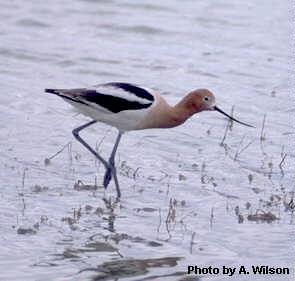 |
| Decurved: the bill curves downward, as in the Brown Creeper (right) or ibises |
 |
| Bent: the bill is deflected at an angle (usually deflected downward at the middle), as in a flamingo. |
 |
| Swollen: the sides of the mandibles are convex, as in a tanager |
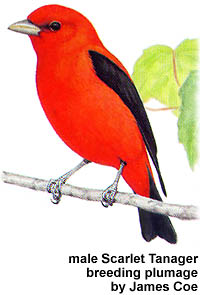 |
| Acute: the bill tapers to a sharp point, as in the Blue-winged Warbler |
 |
| Chisel-like: the tip of the bill is beveled
(e.g., Hairy Woodpecker) |
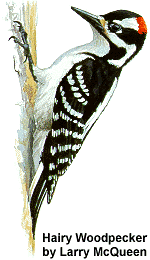 |
| Toothed: the upper mandibular tomium has a "tooth," as in a falcon |
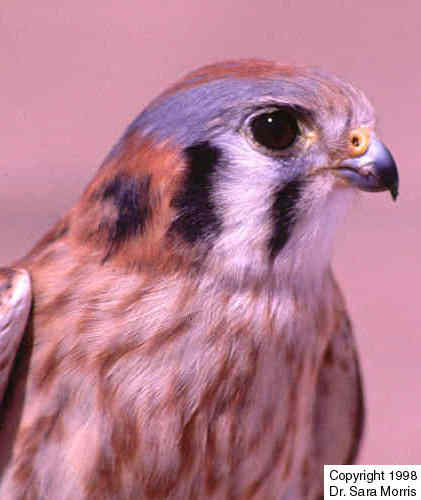 |
| Serrate: the bill has saw-like tomia, as in a merganser. |
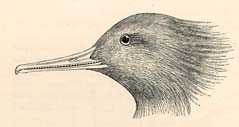 |
| Gibbous: the bill has a pronounced hump, as in a White-winged Scoter. |
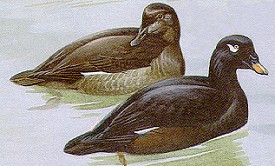 |
| Spatulate, or spoon-shaped: the bill is much widened, or depressed, towards its tip (e.g., Northern Shoveler) | 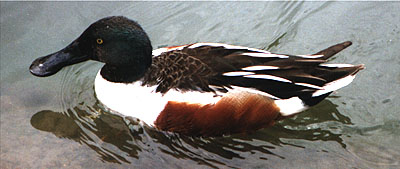 |
| Notched: the bill has a slight nick in the tomia of one or both
mandibles. Most frequently the notch occurs near the tip of the upper mandible,
as in thrushes (like the
American Robin). |
 |
| Conical: the bill has the shape of a cone, as in a White-crowned Sparrow. |
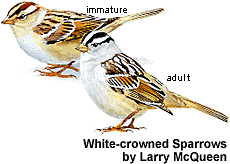 |
| Lamellate, or sieve-billed: the mandibles have just within their tomia a series of transverse tooth-like ridges, as in swans, geese, ducks, & flamingoes. |

|
| Angulated commissure: the commissure forms a sharp angle at the point where the tomium proper meets the rictus (e.g., Evening Grosbeak) |
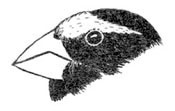 |
| With gular sac: the chin, gular region, and jugulum are distended, as in a pelican. |
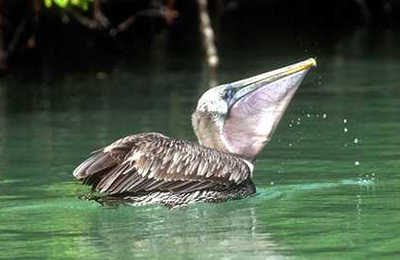 |
